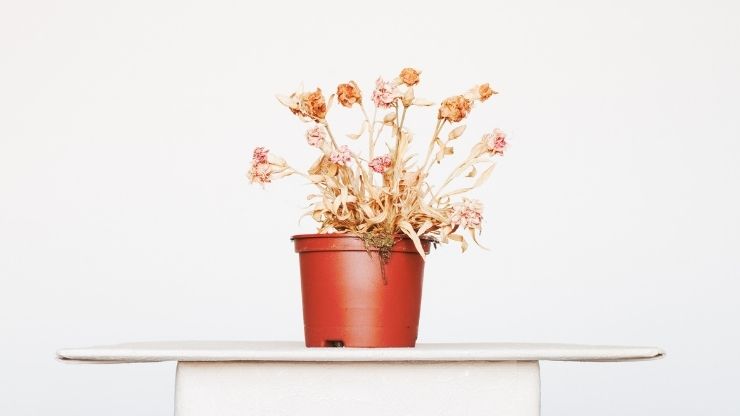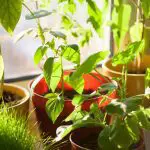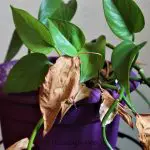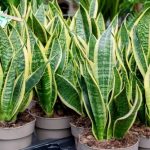The last stage of a plant’s life cycle is death. So yes, plants can die of old age.
All plants keep growing until they die, but the total life span depends on the type of plant. Some plants live for many years, while others die after only a few months – once they’ve produced flowers and seeds. Some may even be immoral and never stop growing.
Tree Life Spans
In the wild, tress can live for decades or even hundreds of years. Think of the mighty oak tree, which has a life span of 150 years or more. Some are even as old as 400 years!
The oldest trees in the world are the Great Basin bristlecone pine trees in Nevada and California. The oldest currently living – named Methuselah – is believed to be at least 4,800 years old.

Other trees with known specimens that have lived over 2,000 years include:
- Patagonian cypress
- Giant sequoia
- Sierra juniper
- Bald cypress
- Rocky Mountain bristlecone pine
- African boabab
- Sacred fig
- Qilian juniper
- Coast redwood
- Foxtail pine
- Limber pine
- Northern whitecedar
- Nootka cypress
Other tree species can live anywhere from 20 years up to thousands of years in the wild. Some shorter-lived tree species include:
- Dwarf Apple Tree (20 years)
- Palm trees (50 years)
- Birch trees (50 years)
- Persimmon tree (60 years)
- Black willow (75 years)
- Red Maple (150 years)
- White Oak (600 years)
Of course there are far too many trees to list them all individually, but you get the idea. Basically, trees live anywhere from 20 – 5,000+ years before they die of old age. That’s a huge range, but it really does depend on the type of tree.

It also depends on where the trees is planted. Urban trees, according to the University of Illinois Extension, have a life expectancy of only 19 – 28 years. Trees in these environments must withstand pollution, poor soil, and limited room for root growth, which limits their age.
Trees kept as houseplants typically have an even shorter lifespan – living only 10 – 15 years on average. Of course, there are always outliers and some indoor gardeners have kept their indoor trees alive for much longer than this.
Plant Life Spans
In the wild, plants have a similar variability in life spans. They live anywhere from a few months to hundreds of years. Annual plants (petunia, marigold, etc.) flower, produce seeds, and die of old age within one year (hence the name annual).

Biennial plants, such as carrots, take two years to complete their life cycle. Perennial plants, including most trees and shrubs, live for many years – but they may lose their leaves and go dormant during the winter months.
Annuals and biennials are the only plants in existence that have a specific lifespan (due to their genetics). For all other plants and trees, we only have an average range – and plants can live a shorter or longer time than the average depending on location and many other factors.
How Long do Houseplants Live?
It depends. Houseplants can live decades if they receive proper care. My mother had a Dracaena marginata that was at least 30 years old when she passed away, and I’ve heard plenty of stories of houseplants living 50+ years.

Bonsai tree is one type of houseplant that will outlive its owner. There are bonsai trees in Japan right now reported to be more than 800 years old! Other long-lived houseplants include:
- Spider Plant (20+ years)
- Weeping Fig (20+ years)
- Snake Plant (20+ years)
- Philodendron (40+ years)
- Jade Plant (50+ years)
- Agave (50+ years)
- Christmas Cactus (100+ years)
- Cast Iron Plant (100+ years)
Although all plants die of old age eventually, houseplants can live for generations under the right conditions. Their lifespans are almost completely up to the owner. Some plants will genetically live longer than others, but you can maximize how long they live with proper care.
How to Know if a Plant is Dying of Old Age
If your houseplant is getting older and begins to lose its vigor, you might wonder if its dying of old age – or if it’s something else you can fix. Here are some signs your plant is dying of old age:
- Wilting leaves – If all the plant’s needs are met but its leaves continue to wilt or turn yellow/brown, it may be succumbing to old age.
- Inability to Flower – If the plant stops flowering or the flowers die before they fully form, this could be a sign your plant is dying of old age.
- Falling Over/Not Taking Water – If the plant is not taking water through the roots anymore and starts falling over, this could also be due to old age.
However, these could also be caused by improper care. I would only think a plant is dying of old age if all its needs are perfectly met and it still fails to thrive. And also if it’s at the end of its expected years of longevity.
Are Some Plants Immortal?
It’s possible. Some plants – such as the Bristlecone pines and other large trees – seem to keep growing indefinitely. No one really knows what their natural lifespan is – or if they even have one. It’s possible they would grow forever if no outside factors interfered.
Some plants like the Bonsai tree are also examples of possibly immortal species.
Unlike humans and animals, there is no single age where plants are considered “old.” They have indeterminate growth, and they can continue growing indefinitely if the conditions are right (except for annuals and biennials of course).





